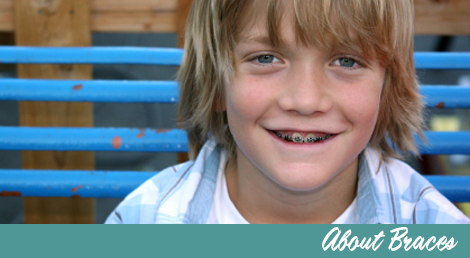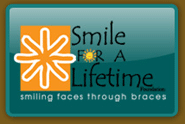 |
 |
||
(661) 665-7600 |
|||
What To Expect | Types of Braces | Types of Appliances | Retainers | Troubleshooting What To ExpectEating with bracesAs you may have heard from friends or siblings, there are certain things you should refrain from eating while you are in braces. For the first few days your teeth and mouth may be sore, so you will probably want to stick to soft foods which are easy to chew and swallow. In general, sticky/chewy foods, hard/crunchy foods, or foods you have to bite into with your front teeth should be avoided for the duration of your orthodontic treatment. NO-NO FOODS include but are not limited to:
The obvious reasons for avoiding these types of foods are that they can be damaging to your braces or orthodontic appliances. Hard and crunchy foods can dislodge brackets and bend or break wires. Chewy, sticky foods can stick to brackets and bands, causing them to become loose. Even some of the healthiest snacks can damage braces. Apples, carrots, and celery should be cut up into small bites and chewed with your back teeth to avoid breaking the front brackets or bending arch wires. Popcorn is attributed to a multitude of problems concerning braces. Husks can become lodged under the bracket into the tissue or in hard to reach areas, creating uncomfortable irritations to your gums. Unpopped kernels are extremely hard and can break not only brackets and wires but possibly teeth. Regardless of whether you have braces or not, ice is never safe to chew! The best way to prevent damage is to be attentive to what you are eating, to take small bites, and to chew carefully with your back teeth. Although breakage of orthodontic braces or appliances is sometimes unavoidable, patients who consistently need to be seen for repairs delay their treatment and may be subject to additional fees. Brushing and flossing with bracesIf ever there was a time to be diligent about your oral hygiene, that time is now! While the benefits of braces are numerous and far outweigh any possible cons, they do require you to become very thorough in your brushing and flossing habits. Foods can become stuck around brackets and remain on the teeth for long periods of time, increasing your risk of cavities. Poor brushing and flossing can lead to decalcifications (white marks on the teeth), which can be permanent and are not aesthetically pleasing on a nice straight smile. It is recommended to brush and rinse after every meal and floss daily to maintain a healthy environment for the best possible outcome. Immediately following your first appointment, one of Dr. Montano's registered dental assistants will demonstrate proper brushing and flossing and instruct you on maintaining an adequate diet while in orthodontic treatment. Some pointers for proper brushing:
Soreness and loosening of teethA common occurrence in the begining orthodontic patient is soreness or tenderness of the teeth after bracket and wire placement. This will usually occur a few hours after your initial appointment. The forces from the wires and brackets create the much-needed pressure on your teeth to allow them to move and straighten. This may make it difficult to eat and talk, but discomfort should start to subside within a few days. Exactly when the discomfort will dissipate is impossible to predict and differs for each patient. If needed, rinse with warm salt water a few times daily, or in severe cases Tylenol (or whatever you normally take for pain) can be used for relief. Initially, the braces may feel rough against the cheeks, lips, and tongue. You may place wax around the bracket until the irritation disappears or the mouth becomes used to the braces. Eventually, once you get used to the braces and proper tooth alignment occurs, this will no longer be a concern. If you happen to need more wax than what we have provided at your initial visit, we can furnish you with more at your next visit, or check with your local drug store for wax or silicon ear plugs. It may come as a surprise to some but there will come a time when your teeth feel loose. That is because they are. This is nothing to worry about, as it is a normal process. The teeth must first loosen in their bone sockets so they can be moved. This will occur several times over the course of treatment. Once active movement has ceased, the teeth will become rigid again in their new, corrected positions. |
|||
